In late 2013, I thought I tried the rarest, weirdest, most unheard-of tea unicorn out there—a heicha (dark tea) from Taiwan.
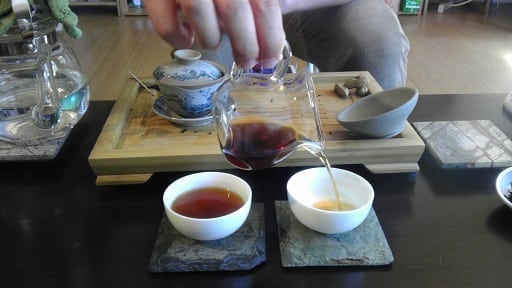
After three years of palatial growth, though, I’m now convinced that it was a Yunnan grown puerh that was merely stored in Taiwan. Still unique, but not quite the unicorn I thought it was. However, I learned of a group who might have created one.
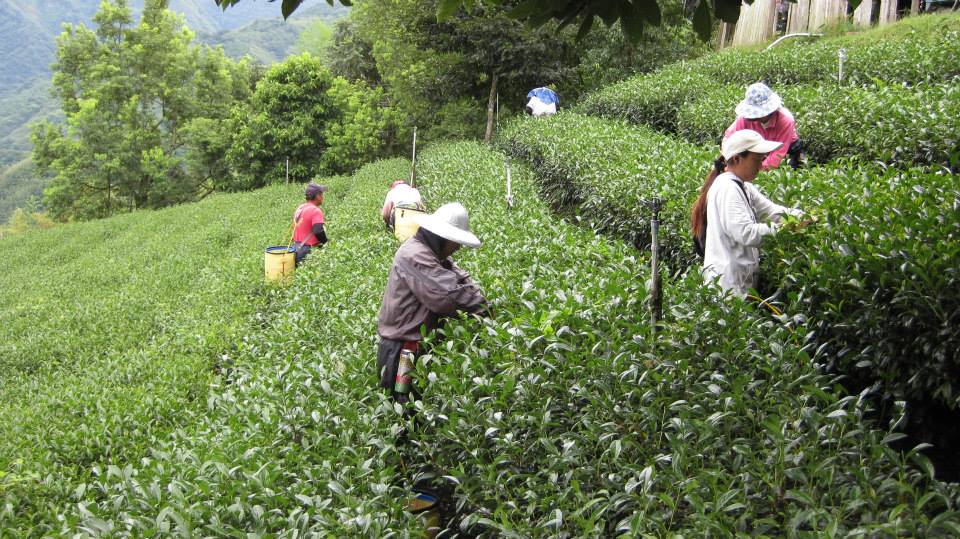
This was a tea growing group made up of members of the Tsou Tribe—a people indigenous to parts of central southern Taiwan. The Tsou-Vayiyana tea growing group hailed from Ali Shan in Chiayi County, Taiwan. Also known as: “My favorite oolong mountain”.
I first met their marketing guru—Silvia Wang—briefly at World Tea Expo 2013. (I.e. My very first Expo!) Fellow weird tea hunter, and all-around great guy, Greg “Norbu Tea” Glancy was volunteering at the Tsou-Vayiyana booth. And that was where I learned more about them.

The Tsou-Vayiyana group’s HQ—known as the Pu Cha Hsiang Teashop—was based in Dabang Village. (Wherever that was.) They ran three tea gardens, all of which were used to produce several different types of teas. Including red oolongs, black teas, open-leaf Ali Shan oolongs, and a fantastic white tea.
To date, I’ve tried most of their wares, thanks to Greg’s Norbu Tea Company . . . except one. The elusive unicorn I alluded to earlier. Following WTE 2013, I decided to research Tsou-Vayiyana (and their teashop) further, and that’s when I came across it.
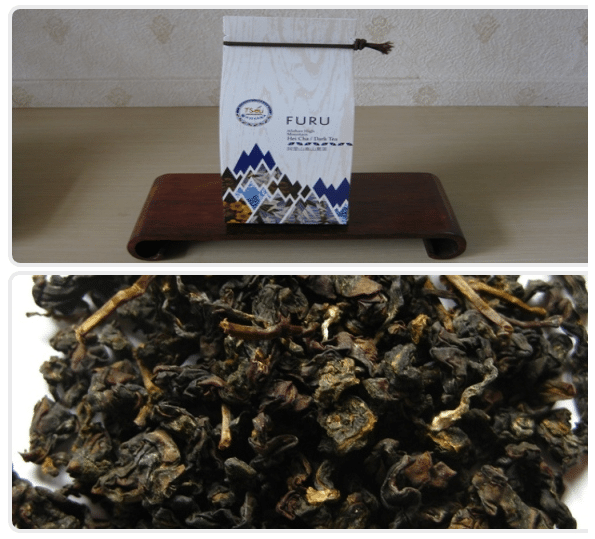
Taiwanese dark tea. From my favorite Taiwanese mountain, no less!
Of course, in true “me”-like fashion, I promptly forgot about trying to acquire it until late-2015. I finally mustered the courage (and finances) to venture to one of the many online brokers they went through. The problem? Shipping charges. Dear lord . . . I would’ve had to pay quadruple the price.
So, I went about it from another angle. I got in touch with Norbu Greg, and wondered if he could put the tea geek feelers out to the Tsou. It was a longshot, but it was worth a shot.
Greg not only pulled through, but came back with a far better response than I ever could have hoped for. Not only were they willing to send a sample to my bloggy li’l hands, but they wanted my feedback! They were still tinkering with their processing techniques (whatever they were), and were requesting taster notes of various plucking seasons. Yes, plural.
Translation: They didn’t just send one sample. They sent three.
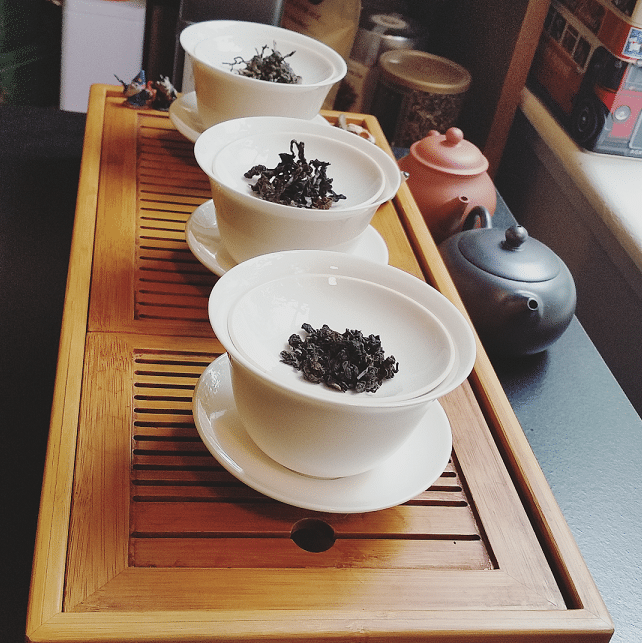
Two from different plucking seasons in 2015, and one from 2012 to see how the formula matured. Elated, no . . . I was downright ecstatic.
For brewing, I went with a quickened approach—similar to what I did with sheng puerhs . . . if I was doing more than one. I used boiled water, a heaping teaspoon of leaves per 6oz. gaiwan, and a one-minute steep. If these were truly as “dark” as their labels promised, they’d hold up just fine.
September 16th, 2015
The youngest offering definitely showed it in the color.

The leaves ranged from beige to youthful green, and the technique used in their rolling was reminiscent of a wilder Ali Shan oolong style. Similarities to oolongs ended there, though. The color palate and the leaf stock looked very maocha-ish, almost unfinished. And the aroma they gave off alternated between buttery, floral . . . and candy sweet on the back-end.
The liquor brewed up to a pale yellow-green, similar to just about any other Ali Shan oolong. The aroma, though? Oooooh, my word; it was like honey-dipped pecans.
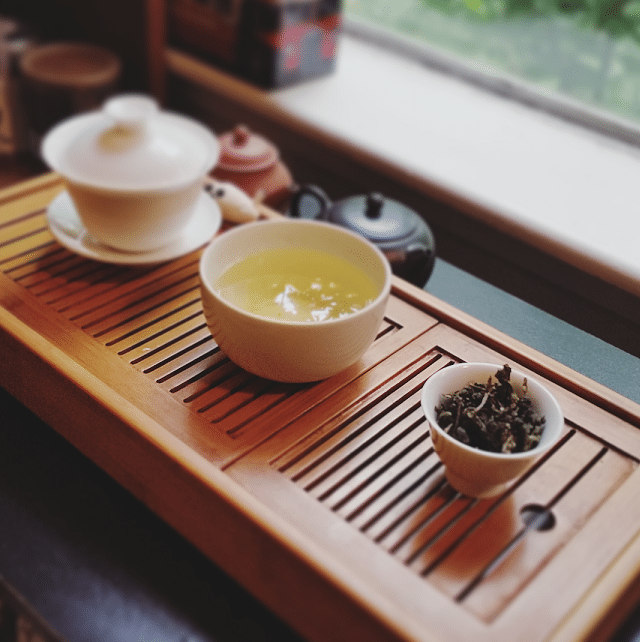
As for taste? That honey-nut thing continued at the forefront, lulling me into a false sense of palatial security. The further I sipped, the further my mind turned to mush, particularly along the creamy top note.
What was I doing again? Oh yeah . . . moving on to the second one.
April 29th, 2015
While only a mere six months older than the September batch, the April leaves were literally night-‘n-day compared to the younger. As in, their color was significantly darker—cedar brown to the color of soot.
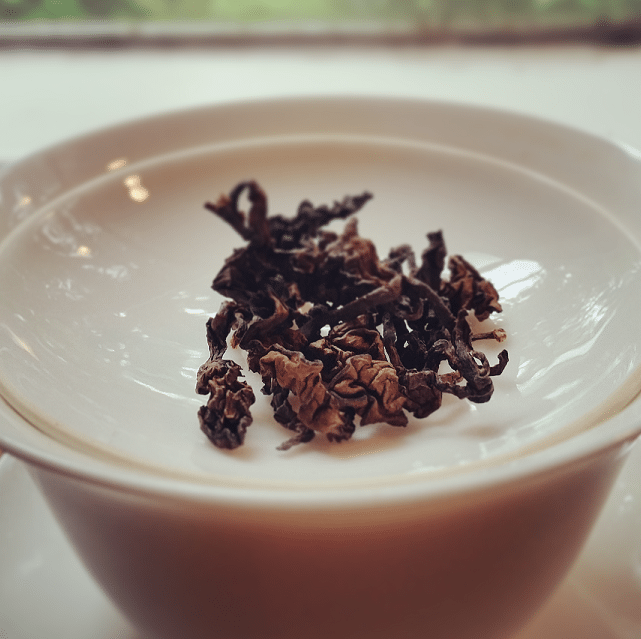
The wild appearance [of the leaf rolling technique employed] also reminded me of a Japanese dark tea I encountered once. One would guess that some sort of deeper roast was employed to an oolong there, but the aromatics contradicted that theory. It was buttery, earthy and sweet. Sure, there was a bit of a “baking” presence on the scent, but not much roast. Lastly, that “dark tea” earthiness completely threw this into its own category.
The liquor brewed to the same yellow-green as the younger batch, except—maybe—less vibrant a color. Older, even. The aroma was equal parts vanilla, butter and almonds. So . . . vanilla-dipped almond milk butter, I guess.

The flavor, though, was simply wild—as in, both crazy and unrestrained. That same aromatic impression obviously showed up in the taste, but on first sip . . . whoah. It was like my tongue forced my brain to think about ten images at once. I felt like I was a sentient peanut trying to get out of the rain—vanilla rain, mind you—but my feet were melting to sugar-butter. And they tasted delicious.
Wow, that makes no sense.
To put it more succinctly, there was a lot going on. Pinpointing exact notes is next to impossible, aside from giving the run-of-the-mill, “It was sweet and creamy”, as a response. That barely scratches the surface. In short, definitely not like a typical Ali Shan oolong, and even more beautifully bizarre than the younger stuff.
Aaaand just as soon as I pick up my brain, I’ll move onto the oldest of the three.
Spring, 2012
The oldest of the bunch definitely showed it in sight, but not so much in smell. The leaves were tightly ball-fisted, like any typical Taiwanese oolong. However, their appearance was considerably darker —again, appearing like a roasted version.

Color palette ranged from dark purple to dark brown. As to the scent . . . there really wasn’t much of one. If one sniffed deep enough, they could detect notes of aromatic earth, but—other than that—there wasn’t much of a smell.
Of the three, the liquor for this brewed the darkest, coloring to a beautiful medium amber. More in line with a low-altitude oolong, of some sort. The aroma really threw me for a loop, it reminded me of a Chinese Dan Cong, due to its tartness. But a grapelike sweetness on the backend contradicted that immediately after.

And now, the taste. Oh, dear Buddha . . . the taste.
Each of these teas has garnered what could best be described as “spirit spasms”. They’re like full-body spasms (of joy), but more internal. All three teas gave me this sort of reaction. However, this one made my eyes roll back, like I was receiving a Highlander Quickening or something.

Where to start?
As I said with the dry leaf smell, there was something akin to a Dan Cong in the scent. Tartness I only ever ran into in a Nilgiri “oolong” from a couple of years ago. But that wasn’t all. As I slurped the perplexing brew, the tartness shifted to a more . . . wine-like note; not exactly a grape-based wine, but maybe plum. Wait, no! A wine made from fermented oolong leaves.
And that was it—the nail on the head—the phrase that brought this all together: Fermented. Oolong. Leaves. Those three words describe the sensation I was feeling, and (just probably) explained away the process these teas underwent. I believe they were processed like normal oolong leaves—plucked, rolled, kill-green and all—but then they were treated to a quickened fermenting process. Either during or after their routine semi-oxidation; it would be the only way to explain the puerh-oolong hybrid character all three teas had.
Do I have a favorite?

Yeah . . . I think I do. Maybe.
The 2012 and Spring 2015 were close to tied, but the latter won out by a downy-furred leaf. There was just so much going on, and it’s one that I’d look forward to revisiting in a couple of years (if ever given the chance.) The 2012 was stupendous as well, but the flavor was just one note shy of the technique employed for the Spring 2015. However, it did give me a good idea how the flavor profile could progress over time. As a heicha should. The Fall 2015 may have been the bronze medal winner here, but that still puts it lightyears ahead of some other experimental heichas I’ve tried.
After all of that, I couldn’t tell you what sort of process was employed just by tasting it. If I were to guess, I’d wager that they took regular oolong maocha and wet-piled/machine-tumbled it like a cooked puerh. But only partially. I say that because there was just enough of an oolong note in all three to indicate as much. Other than that guess, no clue.
In closing, I was good and tea drunk by the end of it. Doing all of these in one sitting probably wasn’t the soundest of decisions. But I felt too Zen to care.

Like a unicorn or something.
For more information on Tsou-Vayiyana and the Pu Cha Hsiang Teahouse, go HERE.
To buy some of their teas, visit Norbu Tea Company‘s page on Tsou-Vayiyana, HERE.
If you’re attending World Tea Expo this year (2016), Tsou-Vayiyana will have a booth! Stop by it, will ya? Tell ’em I sent ya. (I’ve always wanted to say that.)
Leave a Reply